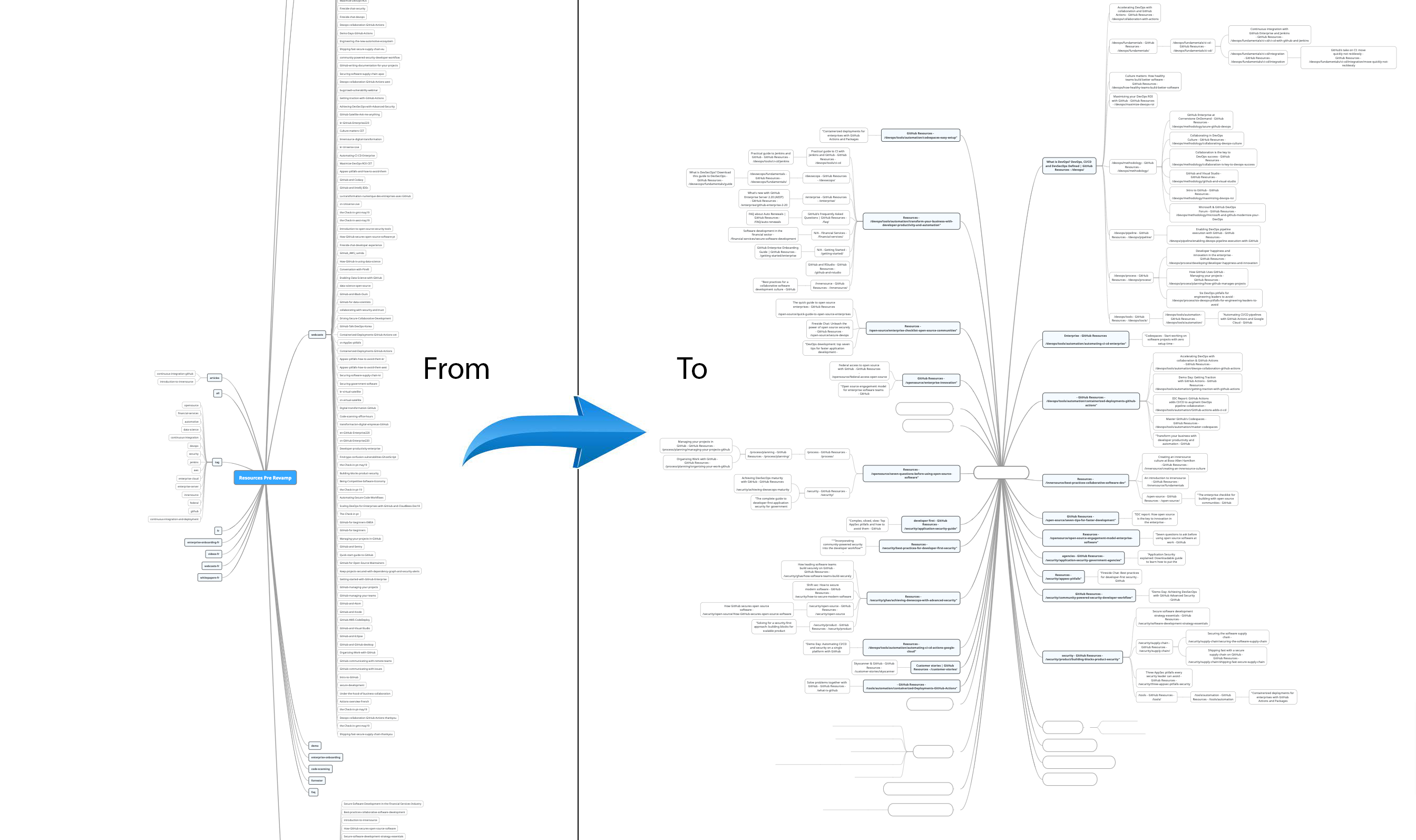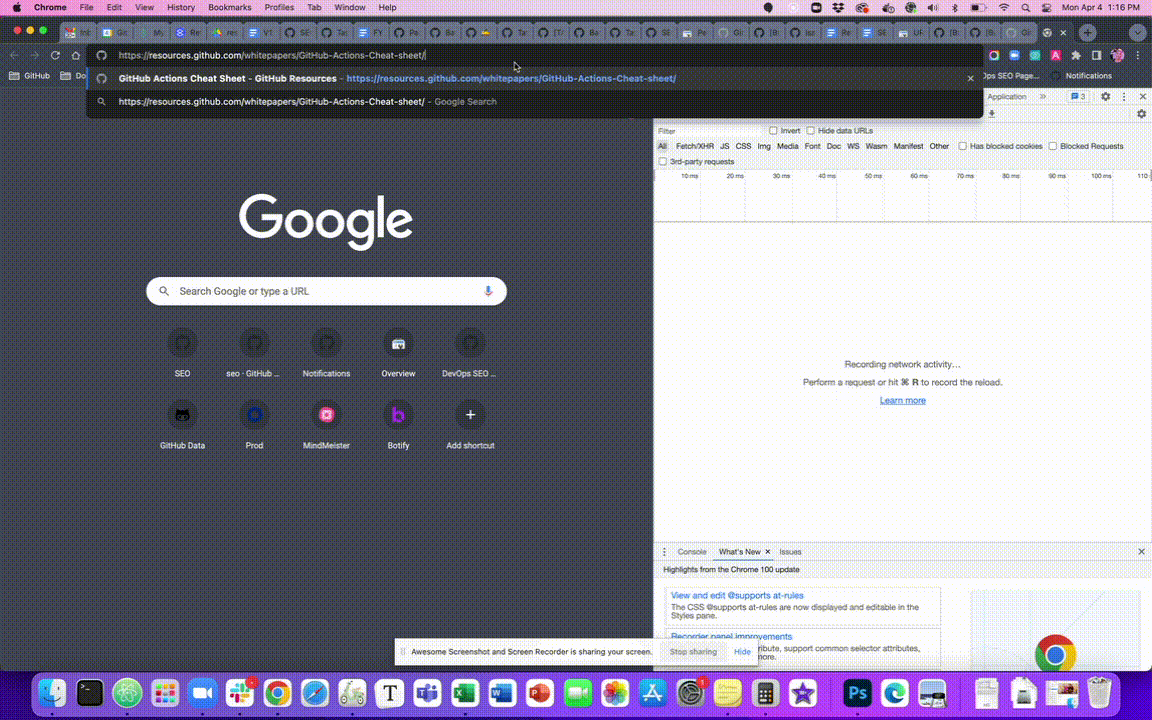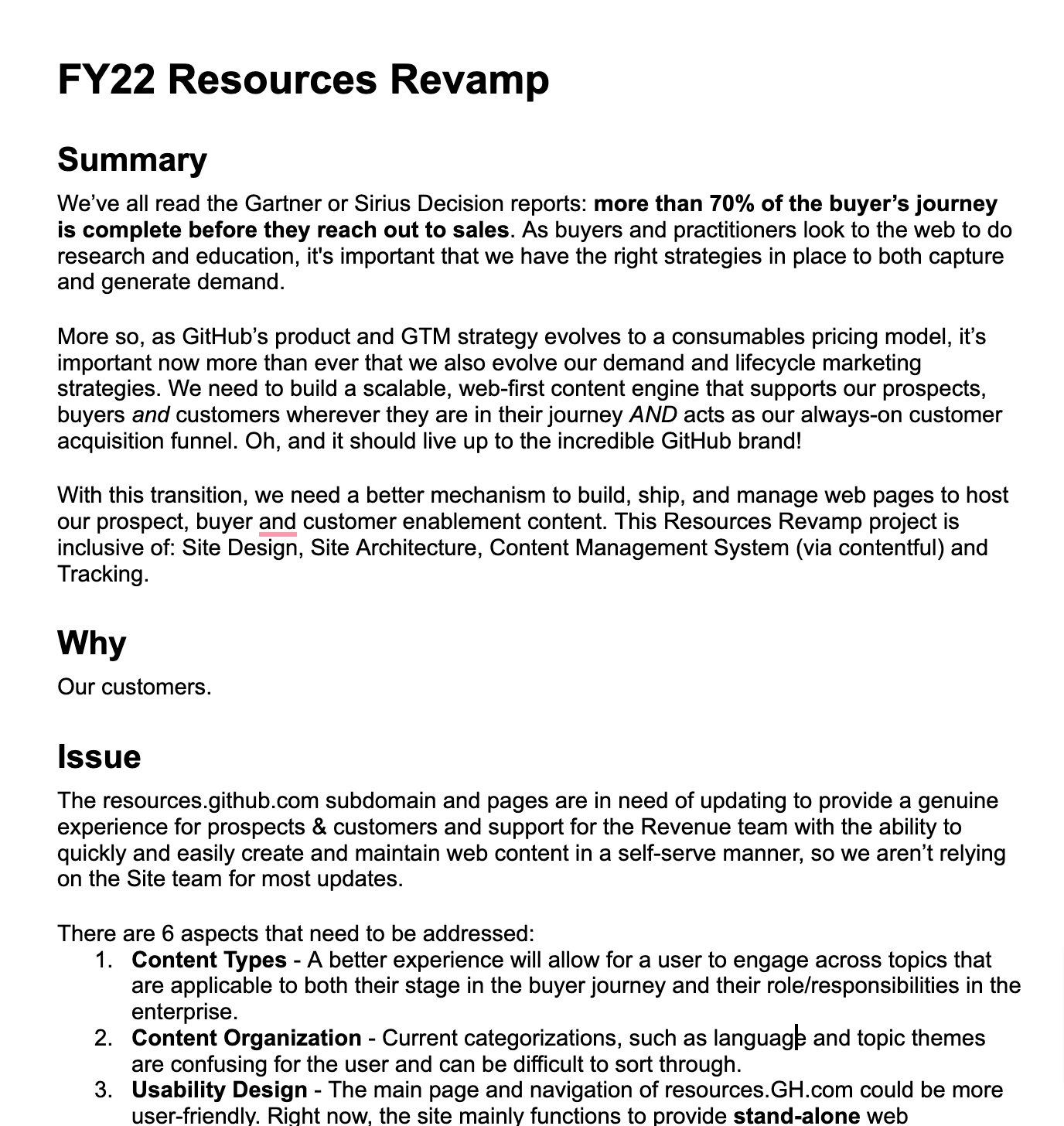Project Description
The Documentation
As the driving force behind this project, I spearheaded the research and documentation outlining our strategy for enhancing the resources.github.com subdomain. I recognized the critical importance of aligning our content strategy with evolving buyer behavior and GitHub’s product and go-to-market strategies. I led the charge in developing a comprehensive plan to revamp our approach.
Through meticulous analysis of market trends and internal needs, I identified key areas for improvement, including content organization, usability design, and alignment with GitHub’s brand identity. I championed the creation of a scalable, web-first content engine that meets the demands of our prospects, buyers, and customers at every stage of their journey and serves as a robust customer acquisition funnel.
Addressing the shortcomings of the current resources.github.com setup, I outlined a series of initiatives to overhaul the site’s design, architecture, and content management system. By creating a roadmap encompassing template and asset creation, content voice guidelines, UI design enhancements, and backend functionality improvements, I laid the groundwork for a transformative overhaul to elevate user experience and drive tangible business outcomes.
Furthermore, I emphasized the need for rigorous testing, ongoing measurement, and continuous optimization to ensure the success of our revamped resources platform. By defining success metrics centered around increased search impressions, enhanced conversions, and improved user engagement, I established a framework for evaluating the effectiveness of our efforts and driving continuous improvement.
The Project
As the driving force behind the Resources Revamp project, my primary goal was to overhaul and update the Resources subdomain (resources.github.com) to serve our users better and align with GitHub’s evolving product and GTM strategy. Spearheading this initiative involved extensive research, documentation, and oversight of the execution and content strategy.
The project addressed various aspects, including page template definitions, components, site engineering tracking issues, and final wireframes. Requirements were meticulously outlined, focusing on Contentful integration, SEO optimization, user-friendly CMS configuration, and creating eight pre-built page templates.
Throughout the project, collaboration and communication were paramount. Workshops were conducted to gather insights and define problem statements, empathy maps were created to understand user needs, and gloss overviews were conducted to guide design decisions. Regular status updates informed stakeholders of progress, challenges, and next steps.
Despite delays and challenges, such as procurement issues and scope adjustments, the team persevered. Development milestones were achieved, wireframes were finalized, and Monogram, the development agency, completed their work.
Finally, the new Resources Hub site was launched after nearly a year of dedication and hard work. The site boasts an updated look and feel, improved menu navigation, and a revised URL structure for enhanced SEO. Post-launch fixes are ongoing, guided by a thorough post-mortem analysis to improve future project management and outcomes.
Overall, the success of the Resources Revamp project underscores the collaborative effort and dedication of everyone involved. From defining requirements to addressing post-launch issues, each step was meticulously planned and executed, resulting in a valuable asset for GitHub users.
Technical Issues
During the project launch, I found several technical issues, including a strange redirect through a server 404 code that would stop Google and other search engines from seeing all pages on the site. This was quickly addressed by the team responsible for launching the project and the agency that developed the pages was pulled while GitHub engineers took over all fixes under my guidance.




